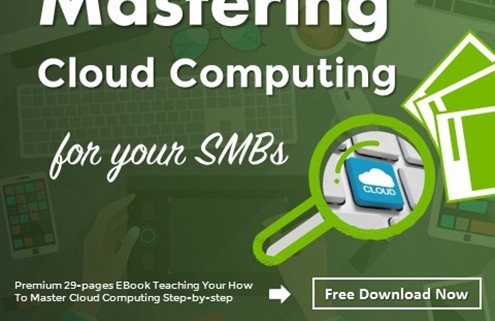Mastering Cloud Computing for Your SMBs
–4 questions every CEO/CIO needs answered
The cloud market has almost literally caused a storm as corporations, both small-to-medium businesses (SMBs) and larger, multinational corporations (MNCs), rush to adopt the cloud paradigm to see substantial cost savings and higher access to data in an increasingly knowledge-based economy.
However, despite its escalating growth, cloud computing continues to be subjected to doubt and skepticism over its many benefits from many organizations. Questions pertaining to cloud security and data theft remain unanswered. Other issues regarding control of service providers and cloud relevance also remains important.
CEOs and CIOs of SMBs therefore need to think big about cloud adoption by carefully assessing the risks, benefits, and threats and not merely jump on the bandwagon like other corporations. Otherwise, SMBs would simply be running without looking, and crash into major, unanticipated difficulties that can cause them a lot of problems.
Let’s take a look at the top questions on the minds of CEOs and CIOs regarding cloud adoption.
[ninja-inline id=9494]
1. How will the cloud provide better security?
Cloud security has received a fair amount of bad reputation from organizations and is the biggest obstacle for cloud implementation. According to a survey conducted by CipherCloud of 2,000 companies, compliance and unprotected data were the two biggest challenges for companies.
Although security is indeed a major concern in cloud computing, it should not be taken to oppose cloud adoption. Cloud, like any tech phenomenon, will be open to security risks if proper security codes and encryption technologies are not implemented.
In fact, most of the cyber attacks encountered by corporations are not due to the constant evolution of cyber attacks, but because the security industry has not adapted its security systems over the years. A report from SOPHOS highlights how many of the platforms outside Microsoft have security flaws that have gone unnoticed by the security industry for 15 years.
SMBs thus need to consider implementing upgraded security protocols to combat data theft. As corporations, thought leaders, and governments around the world take serious steps in countering data flaws, it is only a matter of time that service providers will offer highly advanced security systems in the cloud network.
2. How can my organization prevent data theft?
It is always crucial to know how you can prevent data theft. There are a number of methods your SMB can adopt to minimize the risk of data theft.
Firstly, you can plan scheduled updates. You need to take a proactive approach by having frequent updates of your cloud security software systems. An update frequency of twice a month or more, depending on the risk of data theft you expect, is advisable.
Secondly, you can make regular checks for unauthorized VPN access. Do not make the mistake of giving access to employees lower down the hierarchy. There is a rising trend of employees accessing the cloud with the permission of their heads of department. Limited user access is strongly advised. You can only increase your chances of security if you limit the people you provided updated access credentials to.
Other ways through which you can fortify your cloud network include increasing your password strength by considering pass phrases and refraining from using ColdFusion software due to its increased exposure to security risks.
3. How to choose the right cloud services provider?
It is only inevitable that the growth of the cloud computing market will spawn dozens if not hundreds of cloud service providers. Amazon.com’s AWS’ eye-opening disclosure of its stellar performance for the first quarter will only entice potential entrants to provide cloud services to corporations.
The question CEOs and CIOs need to answer is how they should go about choosing the right services provider. Here are a few considerations:
-
- What technical capabilities does the service provider offer? How comprehensively can the service provider cater to the growing needs of businesses, and how well do its features conform to actual trends?
- How secure are the service providers’ cloud network facilities? How integrated are the encryption protocols and how successfully can it withstand the threat malicious software such as Trojans, spyware, DDoS and phishing attacks?
- What experience does the service provider have in offering quality cloud services? How good is the track record?
4. How do I decide cloud is suitable for my organization?
There are a few considerations that have to be taken into account before giving cloud the green light for your business. Cloud adoption should be pursued if the following conditions are met:
- Efficiencies in cost and business processes are highly important
- Voluminous data storage and access is integral for your industry
- Your technological infrastructure has become obsolete or near its end
- Simplifying a disaster recovery plan is your top priority
End Note
Cloud computing adoption has to be considered from its uses, challenges and relevance for your organization. Managers, CEOs, and CIOs need to conduct a cost-benefit analysis and determine how they should be using cloud to restructure its processes and functions.



